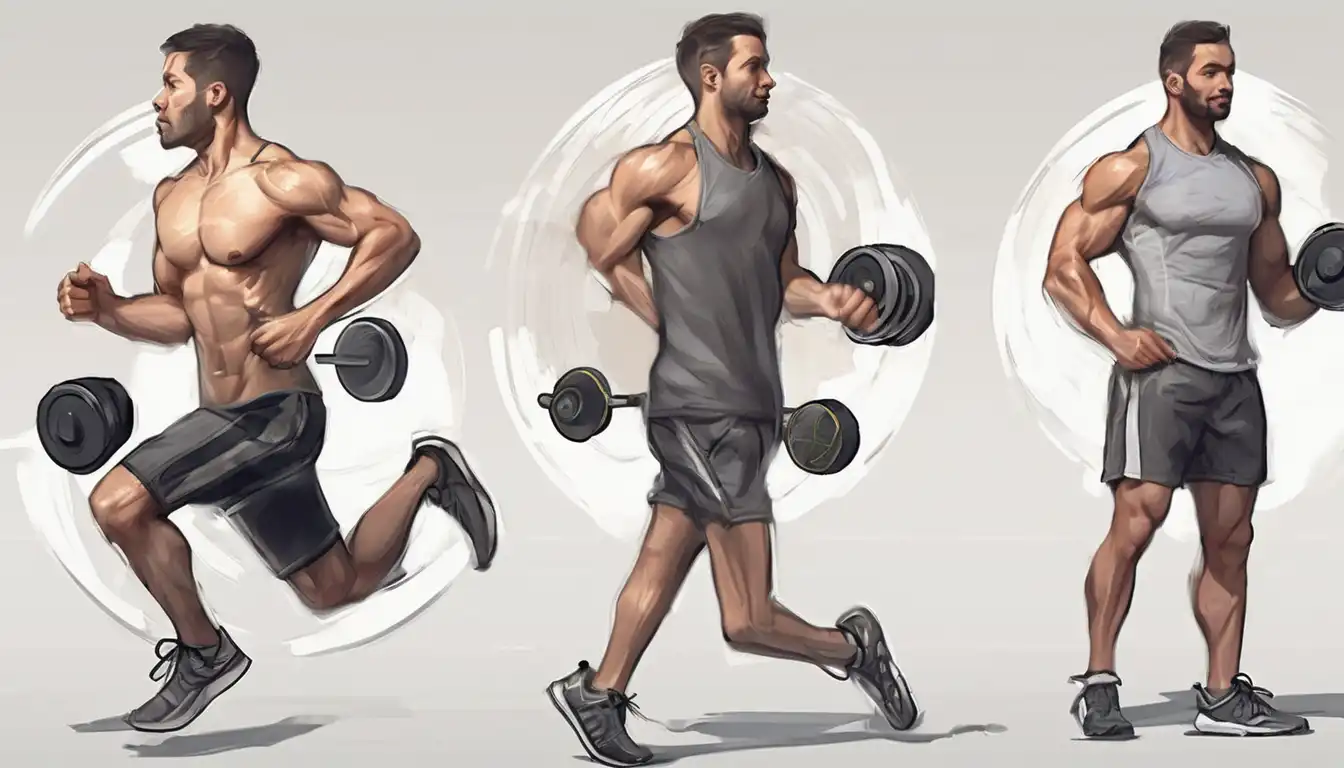Getting Started: Your Path to Fitness Success
Embarking on a fitness journey can feel overwhelming, but with the right approach, anyone can build a sustainable routine that delivers real results. Whether you're looking to lose weight, build strength, or simply improve your overall health, this comprehensive guide will walk you through every step of creating an effective fitness plan tailored to your needs.
Setting Realistic Fitness Goals
Before you even think about hitting the gym, it's crucial to establish clear, achievable goals. Many beginners make the mistake of setting overly ambitious targets that lead to frustration and burnout. Instead, focus on SMART goals: Specific, Measurable, Achievable, Relevant, and Time-bound. For example, rather than saying "I want to get fit," aim for "I will walk 30 minutes daily for the next month" or "I will complete three strength training sessions per week."
Consider what motivates you personally. Are you training for a specific event? Looking to improve your energy levels? Wanting to keep up with your kids? Understanding your "why" will help maintain your motivation when the initial excitement fades. Remember that fitness is a marathon, not a sprint – small, consistent efforts yield the best long-term results.
Choosing the Right Exercise Program
With countless workout options available, selecting the right program can be confusing. Here are the main categories to consider:
Cardiovascular Exercise
Cardio exercises improve heart health and burn calories. Excellent beginner options include:
- Brisk walking – low impact and accessible
- Cycling – gentle on joints
- Swimming – full-body workout with minimal impact
- Dancing – fun and effective
Start with 20-30 minutes of moderate cardio 3-4 times per week, gradually increasing duration and intensity as your fitness improves.
Strength Training
Building muscle boosts metabolism and supports joint health. Beginners should focus on:
- Bodyweight exercises (push-ups, squats, lunges)
- Resistance bands
- Light dumbbells
- Machine weights at the gym
Aim for 2-3 strength sessions weekly, allowing at least one rest day between sessions for muscle recovery.
Flexibility and Mobility
Don't neglect stretching and mobility work. Incorporate:
- Dynamic stretching before workouts
- Static stretching after exercise
- Yoga or Pilates for improved flexibility
Creating Your Weekly Schedule
Consistency is key to fitness success. Design a balanced weekly schedule that fits your lifestyle. A sample beginner schedule might look like:
- Monday: 30-minute walk + full-body strength
- Tuesday: Active recovery (light stretching)
- Wednesday: 25-minute cycling + core work
- Thursday: Rest day
- Friday: 30-minute swim + full-body strength
- Saturday: Active fun (hiking, dancing, sports)
- Sunday: Complete rest
Remember to listen to your body and adjust as needed. If you're feeling overly fatigued, an extra rest day might be more beneficial than pushing through a workout.
Essential Equipment for Beginners
You don't need an expensive gym membership to get fit. Start with these basics:
- Comfortable athletic shoes
- Moisture-wicking clothing
- Water bottle
- Exercise mat
- Set of resistance bands
As you progress, you might consider investing in additional equipment like dumbbells or a fitness tracker, but these are optional for getting started.
Nutrition for Fitness Success
Exercise alone isn't enough – proper nutrition fuels your workouts and supports recovery. Focus on:
- Eating balanced meals with lean protein, complex carbs, and healthy fats
- Staying hydrated throughout the day
- Timing meals around workouts (light snack 1-2 hours before, protein-rich meal after)
- Avoiding processed foods and excessive sugar
Don't fall into the trap of "rewarding" workouts with unhealthy foods – this can undo your hard work. Instead, view nutrition as an essential component of your fitness plan.
Overcoming Common Beginner Challenges
Every fitness journey encounters obstacles. Here's how to handle common issues:
Lack of Motivation
Create accountability by working out with a friend, joining a class, or tracking your progress in a journal. Celebrate small victories along the way.
Time Constraints
Break workouts into shorter sessions if needed – three 10-minute walks spread throughout the day can be as effective as one 30-minute session.
Plateaus
When progress stalls, mix up your routine. Try new exercises, increase intensity, or change your workout schedule.
Soreness and Injury Prevention
Some muscle soreness is normal, but sharp pain indicates potential injury. Always warm up properly, use correct form, and don't increase intensity too quickly.
Tracking Your Progress
Monitoring your improvements helps maintain motivation. Consider tracking:
- Workout frequency and duration
- Strength improvements (ability to lift heavier or complete more reps)
- Endurance gains (ability to exercise longer)
- Body measurements (optional – focus on performance over appearance)
- How you feel (energy levels, mood, sleep quality)
Remember that progress isn't always linear – some weeks you'll see dramatic improvements, while others may feel stagnant. Trust the process and stay consistent.
When to Seek Professional Guidance
While many beginners can successfully start a fitness routine independently, consider consulting professionals if:
- You have pre-existing health conditions
- You're unsure about proper form
- You want personalized programming
- You're not seeing results after several months
A certified personal trainer or physical therapist can provide valuable guidance tailored to your specific needs and goals.
Building Long-Term Habits
The ultimate goal is making fitness a sustainable part of your lifestyle. Focus on developing habits rather than pursuing short-term fixes. Find activities you genuinely enjoy, be patient with yourself, and remember that every workout – no matter how small – contributes to your overall health.
Starting a fitness routine is one of the best investments you can make in your long-term health and wellbeing. By following these steps and maintaining consistency, you'll build a strong foundation for lifelong fitness success. Remember that every expert was once a beginner – your journey starts with that first step.
